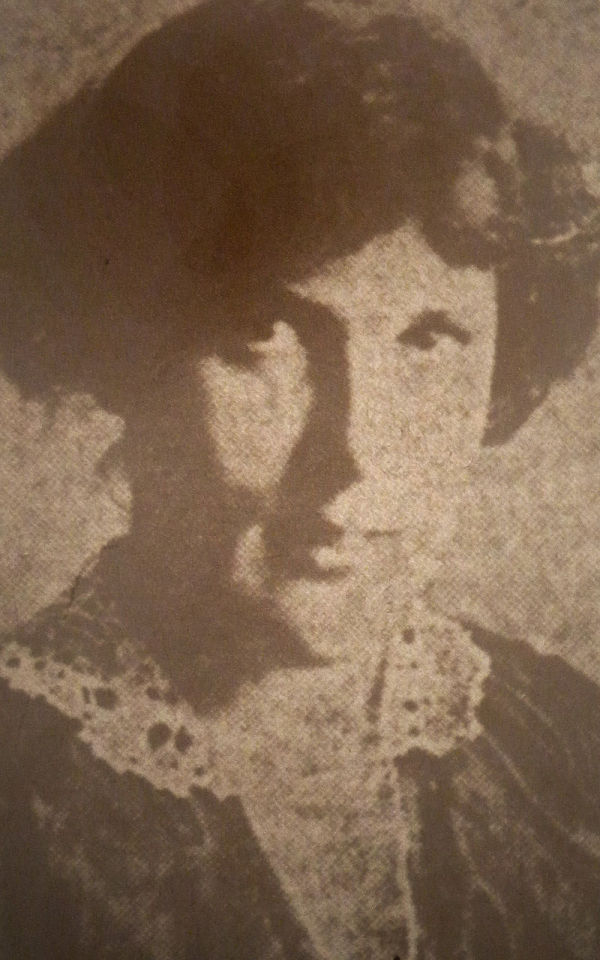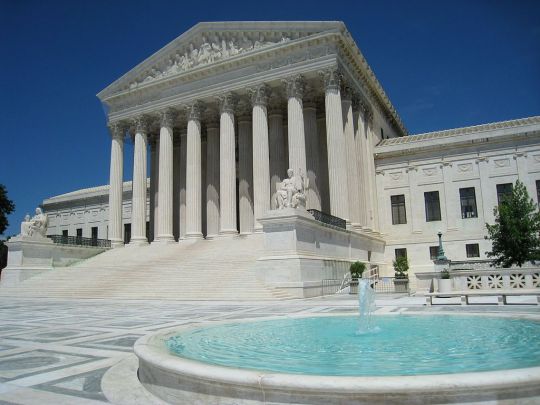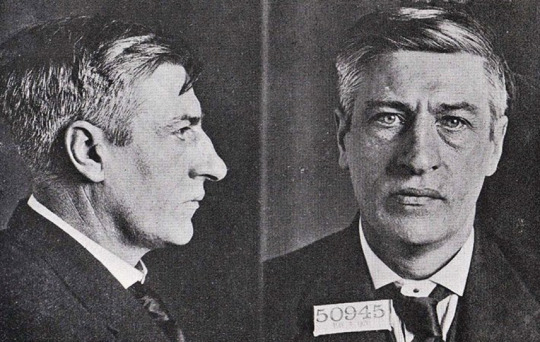#Benjamin Gitlow
Text
#OTD IN 1919 – James Larkin Arrested in New York for "criminal anarchism".
Irish Labour leader James Larkin is arrested in New York charged with criminal anarchy. The indictment states that “Larkin and his co-defendant Benjamin Gitlow were described in the indictment as “men of intelligence, with considerable experience in public affairs, and all this either from honest fanaticism, gross egotism, venomous class hatred, criminal ambition, conceited ignorance on great…

View On WordPress
7 notes
·
View notes
Text
Juliet-Stuart Poyntz. Free will? Abduction? Or murder?
When a private citizen suddenly disappears it could be for a number of reasons. Debts, trauma, fear or perhaps a simple desire to start over. If they can’t become somebody else, they can at least be somewhere else. Of course, there could be other reason. Perhaps they didn’t vanish by their own choosing, but somebody else’s. The still-unsolved vanishing of American Juliet-Stuart Poyntz is a…

View On WordPress
#Anarchist#assassin#assassinated#assassination#Benjamin Gitlow#Carlo Tresca#Central Park#crime and punishment#Espionage#George Mink#History#Il Martello#Juliet Stuart Poyntz#murder#New York#NKVD#Soviet Union#Spanish Civil War#Stalin#treason#true crime#Westchester
0 notes
Link
What surprises many Americans: the regime ruling China was largely put there by the United States. In the 1930s, Japan, then militarily powerful, was the main barrier to Soviet ambitions to communize Asia. Benjamin Gitlow, founding member of the U.S. Communist Party, wrote in I Confess (1940):
When I was in Moscow, the attitude toward the United States in the event of war was discussed. Privately, it was the opinion of all the Russian leaders to whom I spoke that the rivalry between the United States and Japan must actually break out into war between these two.
1 note
·
View note
Photo

Gitlow v. New York: Can States Prohibit Politically Threatening Speech?
Ruling on whether states can punish speech that calls for government overthrow
By
Elianna Spitzer
Updated on July 03, 2019
Gitlow v. New York (1925) examined the case of a Socialist Party member who published a pamphlet advocating for a government overthrow and was subsequently convicted by the state of New York. The Supreme Court ruled that it was constitutional to suppress Gitlow's speech in that instance because the state had a right to protect its citizens from violence. (This position was later reversed in the 1930s.)
More broadly, however, the Gitlow ruling expanded the reach of the U.S Constitution's First Amendment protections. In the decision, the court determined that First Amendment protections applied to state governments as well as the federal government. The decision used the Due Process Clause of the Fourteenth Amendment to establish the “incorporation principle,” which helped advance civil rights litigation for decades to come.
Fast Facts: Gitlow v. State of New York
Case Argued: April 13, 1923; November 23, 1923
Decision Issued: June 8, 1925
Petitioner: Benjamin Gitlow
Respondent: People of the State of New York
Key Questions: Does the First Amendment prevent a state from punishing political speech that directly advocates violent overthrow of the government?
Majority Decision: Justices Taft, Van Devanter, McReynolds, Sutherland, Butler, Sanford, and Stone
Dissenting: Justices Holmes and Brandeis
Ruling: Citing the Criminal Anarchy Law, the State of New York could prohibit advocating violent efforts to overthrow the government.
Facts of the Case
In 1919, Benjamin Gitlow was a member of the Left Wing section of the Socialist Party. He managed a paper whose headquarters doubled as an organizing space for members of his political party. Gitlow used his position at the paper to order and distribute copies of a pamphlet called the “Left Wing Manifesto.” The pamphlet called for the rise of socialism through revolt against the government using organized political strikes and any other means.
After distributing the pamphlet, Gitlow was indicted and convicted by the Supreme Court of New York under the New York’s Criminal Anarchy Law. The Criminal Anarchy Law, which was adopted in 1902, prohibited anyone from spreading the idea that the U.S. government should be overthrown through force or any other unlawful means.
Constitutional Issues
Gitlow’s attorneys appealed the case to the highest level: the U.S. Supreme Court. The Court was tasked with deciding whether New York’s Criminal Anarchy Law violated the First Amendment of the United States Constitution. Under the First Amendment, can a state prohibit individual speech if that speech calls for overthrowing of the government?
The Arguments
Gitlow’s attorneys argued that the Criminal Anarchy Law was unconstitutional. They asserted that, that under the Due Process Clause of the Fourteenth Amendment, states could not create laws that violated First Amendment protections. According to Gitlow’s attorneys, the Criminal Anarchy Law unconstitutionally suppressed Gitlow’s right to free speech. Furthermore, they argued, under Schenck v. U.S., the state needed to prove that the pamphlets created a “clear and present danger” to the U.S. government in order to suppress the speech. Gitlow’s pamphlets had not resulted in harm, violence, or the overthrowing of the government.
Counsel for the state of New York argued that the state had a right to prohibit threatening speech. Gitlow’s pamphlets advocated for violence and the state could constitutionally suppress them in the interest of safety. Counsel for New York also argued that the Supreme Court should not meddle in state affairs, asserting that the First Amendment of the U.S. Constitution should remain exclusively part of the federal system because the New York State Constitution adequately protected Gitlow’s rights.
Majority Opinion
Justice Edward Sanford delivered the opinion of the court in 1925. The Court found that the Criminal Anarchy Law was constitutional because the state had a right to protect its citizens from violence. New York could not be expected to wait for violence to break out before suppressing speech advocating for that violence. Justice Sanford wrote,
“[T]he immediate danger is none the less real and substantial, because the effect of a given utterance cannot be accurately foreseen.”
Consequently, the fact that no actual violence had come from the pamphlets was irrelevant to the Justices. The Court drew upon two previous cases, Schenck v. U.S. and Abrams v. U.S., to demonstrate that the First Amendment was not absolute in its protection of free speech. Under Schenck, speech could be limited if the government could demonstrate that the words created a “clear and present danger.” In Gitlow, the Court partially overturned Schenck, because the Justices did not adhere to the “clear and present danger” test. Instead, they reasoned that a person simply needed to show a “bad tendency” for speech to be suppressed.
The Court also found that the First Amendment of the Bill of Rights was meant to apply to state laws as well as federal laws. The due process clause of the Fourteenth Amendment reads that no state can pass a law that deprives any person of life, liberty, or property. The court interpreted “liberty” as the freedoms listed in the Bill of Rights (speech, the exercise of religion, etc.). Therefore, through the Fourteenth Amendment, states have to respect the first amendment right to freedom of speech. Justice Sanford's opinion explained:
“For present purposes we may and do assume that freedom of speech and of the press — which is protected by the First Amendment from abridgment by Congress — are among the fundamental personal rights and "liberties" protected by the due process clause of the Fourteenth Amendment from impairment by the States.”
Dissenting Opinion
In a famous dissent, Justices Brandeis and Holmes sided with Gitlow. They did not find the Criminal Anarchy Law unconstitutional, but instead argued that it had been improperly applied. The Justices reasoned that the court should have upheld the Schenck v. U.S. decision, and that they could not show that Gitlow’s pamphlets created a “clear and present danger.” In fact, the Justices opined:
“Every idea is an incitement […]. The only difference between the expression of an opinion and an incitement in the narrower sense is the speaker's enthusiasm for the result.”
Gitlow’s actions did not meet the threshold set by the test in Schenck, the dissent argued, and thus his speech should not have been suppressed.
The Impact
The ruling was groundbreaking for several reasons. It overturned a previous case, Barron v. Baltimore, by finding that the Bill of Rights applied to the states and not just the federal government. This decision would later become known as the “incorporation principle” or the “incorporation doctrine.” It laid the groundwork for civil rights claims that would reshape American culture in the following decades.
With respect to free speech, the Court later reversed its Gitlow position. In the 1930s, the Supreme Court made it increasingly difficult to suppress speech. However, criminal anarchy laws, like the one in New York, remained in use until the late 1960s as a method of suppressing some types of political speech.
Sources
Gitlow v. People, 268 U.S. 653 (1925).
Tourek, Mary. “New York Criminal Anarchy Law Signed.” Today in Civil Liberties History, 19 Apr. 2018, todayinclh.com/?event=new-york-criminal-anarchy-law-signed.
https://www.thoughtco.com/gitlow-v-new-york-case-4171255
OUR COURTS, CORPORATIONS AND BUREAUCRACIES NEED TO BE AMERICAN AGAIN
DOWNSIZE DC https://downsizedc.org/do-you-have-what-it-takes-to-be-an-agenda-setter/ OPEN THE BOOKS https://www.openthebooks.com/ ELECTION INTEGRITY https://whoscounting.us/ PROTECT VOTER RIGHTS https://www.truethevote.org/ REPLACE YOUR SEARCH ENGINE https://resulthunter.com/ WATCH America Can We Talk https://rumble.com/user/AmericaCanWeTalk LISTEN TO RUDY https://rumble.com/c/TheRudyGiuliani KEEP TRACK OF CONGRESS https://www.govtrack.us/ RESTORE OUR REPUBLIC https://precinctstrategy.com/ FOLLOW RELENTLESS TRUTH https://t.me/relentlesstruth MOMS FOR LIBERTY https://www.momsforliberty.org/ ROOT FOR AMERICA! https://rootforamerica.com/ READ DC CLOTHESLINE https://www.dcclothesline.com/ STOP FINANCING YOUR ENEMY https://rumble.com/vlf56b-former-govt.-official-financial-system-under-attack.html PRAY https://rumble.com/v13n5sd-michele-bachmann-on-roe-v.-wade-the-power-of-prayer.html READ JULIE KELLY OF AMERICAN GREATNESS https://amgreatness.com/author/julie-kelly/ TRUTH FOR HEALTH ACTION PLAN https://www.truthforhealth.org/ YOUR INTELLIGENCE OFFICER https://rumble.com/c/ThePratherPoint
WAKE UP! https://www.warpath.coffee/ promo code warroom
“GIRD FOR COMBAT” PUT ON THE WHOLE ARMOR OF G-D https://godblesstheusabible.com/
KNOW THE POLITICAL LANDSCAPE
https://rumble.com/c/BannonsWarRoom
https://www.youtube.com/c/MahyarTousi
https://childrenshealthdefense.org/fauci_info/
https://hannenabintuherland.com/usa/color-revolutions-george-soros-and-how-he-pays-loyal-followers/
https://rumble.com/user/GlobalTreePictures [Ukraine on Fire]
https://thenewamerican.com/un-agenda-2030-a-recipe-for-global-socialism/
https://www.amazon.com/Color-Communism-and-Common-Sense/dp/B08NWG857L/
https://rumble.com/v13jfmn-2000-mules-discussion-with-guest-dinesh-dsouza-rudy-giuliani-may-4th-2022-e.html
https://2000mules.com/ https://rumble.com/v13v4sv-2000-mules.html
https://www.yorechildren.com/
https://libertyfirstsociety.com/noncompliantmovie/
https://rumble.com/v13qrmt-expert-constitutional-lawyer-jenna-ellis-gives-an-explosion-interview-may-6.html
https://thejennaellisshow.com/
CAMPAIGN https://campaigns.dailyclout.io/campaign/home
ONE CORPORATION AT A TIME - The Great Patriot Protest & Boycott Book
0 notes
Text
Supreme Court’s Early Rulings On Free Expression
By Esra Aydogdu, The George Washington University Class of 2023
March 9, 2021

The First Amendment of the U.S. Constitution guarantees free speech and a free press protected from government infringement. Over the past century, the Supreme Court has shifted its interpretation of free expression, with changing levels of scrutiny. Here is a look into some of the important rulings on free expression that have shaped its application to this day.
The first significant Supreme Court case on free expression was Schenck v. United States in 1919. Amidst World War I, Charles Schenck and a friend were arrested for conspiring to violate the Espionage Act after distributing leaflets urging the public to defy the military draft.[1] They claimed that their conviction had violated their First Amendment right to freedom of speech, which the Supreme Court turned down. The Court approached this content-based regulation of speech with intermediate scrutiny. They established and utilized the “clear and present danger test”, which allowed for the suppression of speech that creates any clear and present danger that the government has the ability to prevent.[2] In a unanimous decision, the Court ruled that distributing such leaflets was likely to harm war efforts–thus, passing the clear and present danger test. In the same year, a similar case appeared, Abrams v. United States, in which Russian immigrants were convicted under the Espionage Act for distributing leaflets denouncing the United States’ military operations in Russia.[3] In a 7-2 decision, the Court ruled that free speech was not violated, as the case had passed the clear and present danger test. On top of this, however, another test, known as the “bad tendency test”, was also emphasized.[4] This test lowered the level of scrutiny, as rather than having a clear and present danger, the only requirement to allow government regulation of speech is for the speech to have a tendency to bring about harmful consequences. The bad tendency was used once again in Gitlow v. New York, where Benjamin Gitlow was arrested for distributing writing that called on the public to participate in strikes for the establishment of socialism.[5] In a 7-2 decision, the Court found that New York’s ban on speech that advocates for a violent overthrow of the government was constitutional because it is in efforts to protect national security interests.[6] With this decision, the Court also determined that the Bill of Rights not only applied to the federal government, but also to states.
Then, in 1951, Dennis v. United States arose and the Supreme Court shifted back to the clear and present danger test. In this case, communist party members were arrested for advocating for a violent overthrow of the government. The law in question was the Smith Act, which prohibited any instance of teaching or advocating for the overthrow of the government.[7] The Supreme Court ruled in a 6-2 decision that the Smith Act was, in fact, constitutional through the clear and present danger test.[8] However, the test was rewritten; the justices clarified that rather than requiring a present danger, the probability of such action leading to danger was sufficient for government regulation on speech. This alteration of the clear and present danger test became known as the clear and probable test. Up until the 1960s, the Supreme Court maintained the application of intermediate to low scrutiny on such governmental regulations of expression. A significant shift occurred in 1969, however, with Brandenburg v. Ohio. Clarence Brandenburg, a Klu Klux Klan leader, was convicted for giving a speech that advocated for unlawful acts of terrorism.[9] A per curiam opinion determined that the Ohio law had violated Brandenburg’s First Amendment right. A two-prong test was established in this case: the Court must first determine if the speech is directed at causing “imminent lawless action”, then determine the likelihood of such speech actually causing imminent lawless action.[10] This new test raised the level to strict scrutiny, in which less leniency was given to governments for regulating expression. The test of imminent lawless action was used as precedent over the course of the following years. Depending on whether the regulation at-hand is content-based, content-neutral, or unprotected expression, the Supreme Court has greatly varied its application of the freedom of speech guaranteed in the First Amendment of the Constitution.
______________________________________________________________
[1] Schenck v. United States, 249 U.S. 47 (1919)
[2] Ibid.
[3] Abrams v. United States, 250 U.S. 616 (1919)
[4] Ibid.
[5] Gitlow v. New York, 268 U.S. 652 (1925)
[6] Ibid.
[7] Dennis v. United States, 341 U.S. 494 (1951)
[8] Ibid.
[9] Brandenburg v. Ohio, 395 U.S. 444 (1969)
[10] Ibid.
0 notes
Link
作者:可心
第一次世界大战期间言论自由的案件显示,《第一条修正案》中有关言论自由和新闻出版自由二者关系的一个重要问题。美国最高法院从未对“言论”与“新闻出版”加以明确区分,因为它们常常并存于同一个案子中。例如:Abrams声称自己有权以文字传单为媒介自由地表达自己的思想。因此他称他的言论受到《第一条修正案》的言论自由和新闻出版自由条款的双双保护。

香港传媒高层访京团团长萧世和前日引述中宣部部长称,“希望香港媒体不要成为一个干扰大陆政治的基地”,香港多间传媒事后删除或撤回报导,记协发表声明,忧虑是否有传媒自我审查或受外来压力影响。图为早前记协到中联办递交请愿信。
在早年北美洲大陆的各英属殖民地,人们对新闻出版自由的理解与今天不同。1734年纽约报纸出版商约翰?彼得?曾格(John Peter Zenger)的案子便是一个例子。纽约殖民地政府因曾格印发了一篇抨击该殖民地总督的文章,指控他犯有煽动性诽谤罪。《布莱克法律词典》(Black’s Law Dictionary)对诽谤罪的定义是:书面形式的传播“使某人有可能遭受公众仇视、羞辱……鄙视、耻笑…”曾格那篇文章的内容之一宣称总督未经立法议会同意而设立法院,而且擅自剥夺殖民地成员经由陪审团审判的权利。曾格坚称自己有权发表对一个公职官员的批评,而且只要批评属实,即使使该官员受到耻笑也未尝不可。后来陪审团做出有历史意义的判决,宣告曾格无罪,此案确立起一项原则,即事实(truth)是反驳诽谤(libel)指控的依据。
1798年,美国内部对法国人破坏和侵略美国的恐惧与日俱增。由于担心法国大革命的激进潮流可能蔓延到大西洋此岸,美国国会通过了《镇压叛乱法》(Alien and Sedition Act),将“书写、印刷、口头表述或发表任何虚假的、诽谤性的和恶意的针对美国政府、国会、总统的、带有要污蔑……让他们难堪……或煽动人民对政府的仇恨的言论定为犯罪行为。”时任总统约翰?亚当斯(John Adams)把此法案签订成了法律。诸多新闻工作者和报社因此受到起诉。托马斯?杰斐逊1801年就任总统不久后将其废除。
进入19世纪以后,诽谤逐渐由刑事诉讼转变为民事性质。也就是说,原来只是政府起诉用文字批评当政者的人,而今一些��地位的个人为维护自己的名誉开始自行向法院提出诉讼。
19世纪至20世纪初,历次最重大的宪法案件所涉及的不是言论自由问题,而是各州与联邦政府彼此的权力划分以及因政府企图对企业施加管制所引起的法律纷争。20世纪以前,涉及在联邦政府面前维护个人权利的司法案例为数极少。
1833年,美国最高法院裁定,《权利法案》仅确立联邦政府不得侵犯个人权利,而州政府不属受限制之列。这使得在进入20世纪很长一段时间后,各州得以继续对报纸和其他印刷媒体实行检查。因此,尽管宪法《第一条修正案》承诺了新闻出版自由,在美国很长一个历史时期内,各地方法院给敢于批评政府人士提供的保护并不一致。从1833年的裁决到第一次世界大战这段时期内,被提交到最高法院的涉及言论自由的案件寥寥无几。与此同时,一部分记者和作家,以全国发行的杂志为阵地,专职揭露商界和政界的腐败丑闻。这为几十年后在法律上扩大新闻出版自由奠定了条件。
1917年,美国参加第一次世界大战之际,国会通过了“反间谍法”(Espionage Act),对未经授权擅自取得、接受和传播国防资讯的行为加以惩罚。次年,国会对这一法案添加了一套修正案,通称“1918年反叛乱法”(Sedition Act of1918),规定对可能有利于美国敌人的资讯言论施加惩罚。依循这一法律提出的一些公诉案导致美国最高法院就《第一条修正案》的言论自由与新闻出版自由条款做出数项裁决。在这些公诉案中最为重要的一宗,是1919年对Jacob Abrams的起诉案。Abrams因为撰写并散发两份传单,批评伍德罗?威尔逊((Woodrow Wilson)总统及美国政府向俄国沙皇提供镇压布尔什维克革命的军事支持而被控触犯“反叛乱法”。分别用英文和意第绪文写成的这两份传单只被散发在纽约市的小部分地区,而且,Abrams提出的批评同美国的对德作战行动关系不大。但是,美国最高法院还是维持了对Abrams的有罪原判。法院的大多数法官的理由是,阿布拉姆斯的行为对社会稳定形成了“明显而现实的危险”(clear and present danger),因此需要受到惩罚。
“明显而现实的危险”这个标准是由最高法院法官Oliver Wendell Holmes在一年前的有关第一次世界大战期间言论自由的另一项裁决中首先提出的。但是在Abrams一案中,Holmes表示了不同意见,他认为最高法院的大多数法官误用了他提出的这个评估自由言论合法性的标准,他称,“一个无名人物散发一种荒唐的传单”对社会没有构成什么危险。近80年来,在法院对批评政府的口头、书面和象征性表达方式是否符合宪法的案件进行审议时,“明显而现实的危险”这一说法被无数次引用。
第一次世界大战期间言论自由的案件显示,《第一条修正案》中有关言论自由和新闻出版自由二者关系的一个重要问题。美国最高法院从未对“言论”与“新闻出版”加以明确区分,因为它们常常并存于同一个案子中。例如:Abrams声称自己有权以文字传单为媒介自由地表达自己的思想。因此他称他的言论受到《第一条修正案》的言论自由和新闻出版自由条款的双双保护。
将《第一条修正案》作为保护个人言论的宪法原则的做法,在1925年涉及一个名为Benjamin Gitlow的共产党人的案子中有了重大发展。Gitlow出版发行了一份小册子,呼吁通过罢工与集体诉讼的手段来推进社会主义事业。纽约州指控Gitlow触犯了视鼓吹推翻政府为犯罪的州法。美国最高法院尽管维持了对Gitlow的有罪判决,但仍然裁定,《第一条修正案》对言论自由与新闻出版自由的保护,属于任何州或联邦政府都不能加以限制的几项关键性的个人自由权利。法院还援引了1868年批准的《第十四条修正案》中的一段话:“任何州不得……剥夺合众国公民特权或豁免权……;任何州,如未经适当法律程序,不得剥夺任何人的生命、自由或财产;亦不得拒绝给予在其管辖下的任何人平等的法律保护。”最高法院的推论是,这项修正案起草人的用意是使各州今后必须同联邦政府一样,尊重个人自由及权利,而言论自由与新闻出版自由正是其中两项重要的自由。
由此,在个人与州政府的权利相对立时,《第十四条修正案》使《权利法案》的保护力倾向于个人,最高法院就Gitlow案做出的裁决推翻了法院在1833年做出的州不受《权利法案》约束的裁决,更大的鼓励了言论自由。
江峰漫谈:港铁罢工 香港反送中升级 美国会武装干涉么?
前美国驻港澳门总领事唐伟康建议北京给香港自治空间
美国副助卿忧中共驻外机构监控留学生
陈维健:出兵纠正!美国防部长对中共强硬表态
蔡历:新闻联播空前怒怼美国,中国对西方的认知再次发生方向性变化
联合国:阿桑奇若被引渡到美国可能遭受酷刑
VOA连线(乔栈):华为上半年营收增加,称美国制裁或将产生短期影响
川普锁定下个目标!美国贸易代表警告:越南必须减少对美贸易逆差
美国和加拿大超过1亿人的私人资料遭窃
原文链接:可心:浅谈西方民主制度中的传媒自由(三) - 新闻评论
本文标签:传媒自由, 共产党, 出版, 政府, 民主, 民主制度, 法院, 美国, 西方民主
0 notes
Text
#OTD IN 1919 – James Larkin Arrested in New York for "criminal anarchism".
#OTD IN 1919 – James Larkin Arrested in New York for “criminal anarchism”.
Irish Labour leader James Larkin is arrested in New York charged with criminal anarchy. The indictment states that “Larkin and his co-defendant Benjamin Gitlow were described in the indictment as “men of intelligence, with considerable experience in public affairs, and all this either from honest fanaticism, gross egotism, venomous class hatred, criminal ambition, conceited ignorance on great…

View On WordPress
11 notes
·
View notes
Text
#OTD IN 1919 – James Larkin Arrested in New York for "criminal anarchism".
#OTD IN 1919 – James Larkin Arrested in New York for “criminal anarchism”.
Irish Labour leader James Larkin is arrested in New York charged with criminal anarchy. The indictment states that “Larkin and his co-defendant Benjamin Gitlow were described in the indictment as “men of intelligence, with considerable experience in public affairs, and all this either from honest fanaticism, gross egotism, venomous class hatred, criminal ambition, conceited ignorance on great…

View On WordPress
3 notes
·
View notes
Text
1919 - James Larkin Arrested in New York for "criminal anarchism".
1919 – James Larkin Arrested in New York for “criminal anarchism”.
Irish Labour leader James Larkin is arrested in New York charged with criminal anarchy. The indictment states that “Larkin and his co-defendant Benjamin Gitlow were described in the indictment as “men of intelligence, with considerable experience in public affairs, and all this either from honest fanaticism, gross egotism, venomous class hatred, criminal ambition, conceited ignorance on great…
View On WordPress
3 notes
·
View notes